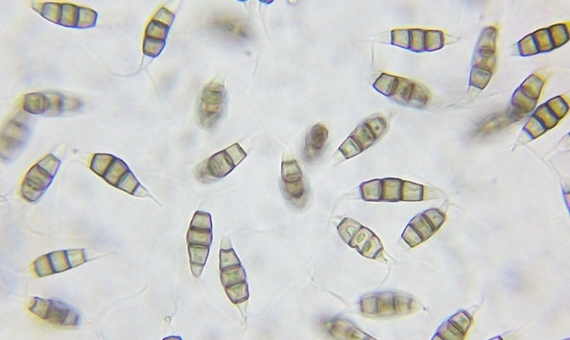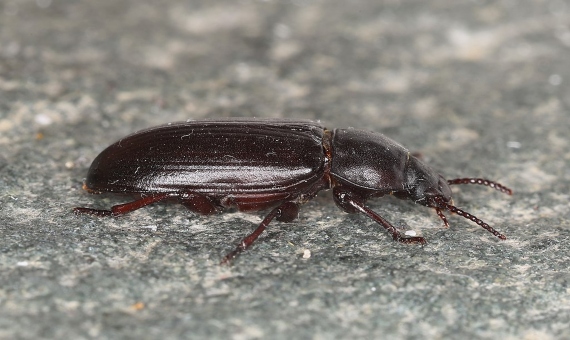Pollution caused by plastic waste, most especially by microplastics (any plastic less than 5 millimeters long) is a pervasive problem everywhere on Earth: microplastics can now be found on land, in our oceans, and even in the air we breathe. A study conducted by three U.S. based universities has revealed that plastic — to the tune of 1,000 metric tons — is raining down on the country’s national parks and wilderness areas. The study also concludes that airborne microplastics can be inhaled, thus representing a direct risk to human health.
Air is not plastic’s only transport mechanism into the human body, as scientists working at the University of Victoria have demonstrated. Through their investigations they have discovered that we ingest an average of 50,000 plastic particles a year. It is estimated that the actual figure is probably much higher (because the study covered a limited sample of food and beverages). This plastic invasion, which is a relatively new phenomenon arising only in the last 70 years, requires joined-up action and coordinated leadership to push through recycling-related legislation and education schemes and to encourage limited consumption. Unfortunately, the environmental problem is already here. Even in a scenario where we are able to curb it, we will need to put science to use to optimally mitigate the effects of plastic pollution. In addition to developing biodegradable alternatives to plastics, the scientific community is stepping up their efforts, looking for natural allies in the biodegradation process.
POLYETHYLENE DIGESTING BACTERIA
Since 2016 we have known that the bacterium, Ideonella sakaiensis 201-F6 can digest single use plastic such as the plastic used for soft drink bottles (polyethylene terephthalate or PET). Polyethylenes are carbon and hydrogen polymers and highly resistant to biological decomposition, so much so that it is estimated that in 100 years less than 0.5 percent would degrade. A team of Japanese scientists uncovered the precise enzyme that is key to the degradation process: PETase, which divides the plastic molecules in such a way that the Ideonella sakaiensis bacteria can absorb it.
Following the enzyme’s lead, scientists representing different countries (the United Kingdom, the United States, Brazil, and China, to name a few) are studying its structure in an effort to replicate its mechanisms. As an example, an experiment conducted jointly by researchers at the University of Portsmouth (UK) and the U.S. Department of Energy successfully optimized the plastic decomposition (up to 10 percent faster) using a mutation of this enzyme. A next step would be to transplant the mutant enzyme to bacteria capable of surviving temperatures of up to 70°C, the temperature at which PET becomes viscous and dissolves more quickly.
The revolutionary potential of these experiments stems from the enzymes that reside in all living beings and that serve to accelerate the chemical reactions that occur in their respective hosts, processes such as digesting food. More importantly from an environmental standpoint, the PETase enzyme can digest PET plastic, a principal source of plastic pollution.
POLYETHYLENE DEGRADING FUNGI

In 2011, cultivating fungi on substrates with plastic polyurethane (PUR), researchers at Yale University (in the U.S.) and San Antonio Abad del Cusco (Peru) confirmed that fungi can decompose polyurethane on solid surfaces and in liquid. The fungus, Pestalotiopsis microspora, which lives in plants, can feed on plastic even in low-oxygen environments (a waste facility, for example). Scientists from Pakistan isolated another fungus, Aspergillus tubingensis, as they attempted to assess its ability to degrade polyester polyurethane (PU), another major source of plastic waste. In order to do so, they grew the fungus for several months in a liquid environment. Afterwards, the polyurethane had decomposed into smaller pieces.
ANIMALS AND ALGAE AGAINST PLASTIC
Humans could also turn to some animals and plants to assist with this process of biodegradation. The flour worm (more officially, the larva of the beetle, Tenebrio molitor) can feed on polystyrene foam (a plastic widely used for its insulating properties) surviving just as it would on its normal diet of bran. In 2015, scientists at three universities in Beijing collaborating with a researcher at Stanford University demonstrated how these larvae can break down plastic in their intestines. The research verified that within 16 days 47.7 percent of the carbon in the polystyrene foam ingested by the larvae was converted into CO2 with the rest transmuted into starch and biomass.

According to Greenpeace data, 12.7 million tons of plastic end up in the ocean each year, so being able to rely on a natural ally on the seafloor will be critical. Although the negative impact of microplastics on oceanic ecosystems and the organisms (and microorganisms) that live there has been more than proven, scientists in India, South Africa, and Malaysia have discovered microalgae native to Malaysia that can contribute to the biodegradation of plastic waste in marine environments. Enzymes that synthesize microalgae weaken the plastic polymer’s chemical bonds, so less energy is required to break it down. Scientists hope to convert plastics into metabolites, i.e. natural substances that are produced during the digestive process and other chemical processes in living beings. This is the future of the plastic recycling revolution: using natural elements to break plastics down and return them to the natural cycle.
Comments on this publication